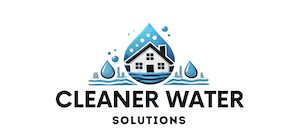For millions of Americans who rely on private wells as their primary water source, ensuring that water is safe to drink is essential. Unlike municipal water systems, private wells are not subject to federal regulations under the Environmental Protection Agency’s (EPA) Safe Drinking Water Act. This means homeowners bear the responsibility of testing and treating their own water, a task that is often overlooked. Untreated well water can harbor a variety of contaminants, many of which pose serious health risks—especially to children, the elderly, and individuals with weakened immune systems.
Common Contaminants in Well Water and Their Health Risks
Understanding the most common contaminants in untreated well water is the first step toward protecting your family’s health. These contaminants can enter the water supply from natural sources, human activity, or through poorly maintained wells.
- Bacteria and Viruses
Sources: Bacteria and viruses can enter well water through animal waste, septic systems, or runoff from agricultural areas.
Health Risks: Pathogens like E. coli, Salmonella, and norovirus can cause gastrointestinal illnesses, leading to symptoms such as diarrhea, vomiting, cramps, and fever. For young children, the elderly, and immunocompromised individuals, these infections can be severe or even life-threatening. The Centers for Disease Control and Prevention (CDC) notes that contaminated water can lead to outbreaks of waterborne diseases, especially in rural areas . - Nitrates
Sources: Nitrates primarily enter groundwater from agricultural runoff, fertilizers, and sewage.
Health Risks: High nitrate levels are particularly dangerous for infants. Nitrate contamination can cause “blue baby syndrome” (methemoglobinemia), a condition where an infant’s blood cannot carry enough oxygen, leading to serious health issues and even death if untreated . The EPA advises well owners to test for nitrates regularly if they live near agricultural areas . - Arsenic
Sources: Arsenic is a naturally occurring element that can dissolve into groundwater from rocks and soil, though human activities like mining and the use of certain pesticides can also increase arsenic levels.
Health Risks: Long-term exposure to arsenic in drinking water has been linked to various cancers, including bladder, lung, and skin cancers. Chronic exposure can also cause cardiovascular diseases, neurological problems, and developmental delays in children. The World Health Organization (WHO) considers arsenic one of the most dangerous drinking water contaminants globally . - Lead
Sources: Lead contamination in well water usually results from corroded pipes or plumbing systems.
Health Risks: Lead is particularly harmful to children, as it can interfere with brain development, resulting in reduced IQ, attention disorders, and behavioral problems. In adults, lead exposure can cause hypertension, kidney damage, and reproductive issues . According to the EPA, there is no safe level of lead in drinking water . - Iron and Manganese
Sources: Both iron and manganese are naturally occurring in groundwater, especially in regions with high mineral content in the soil.
Health Risks: While not typically dangerous in small amounts, excessive iron and manganese can affect the taste and odor of water, making it unpleasant to drink. High concentrations of manganese, particularly in children, can lead to cognitive and neurological impairments . - Radon
Sources: Radon is a naturally occurring radioactive gas that can dissolve into groundwater from surrounding rock formations.
Health Risks: Long-term exposure to radon in drinking water increases the risk of lung cancer when the gas is released into the air during activities such as showering or cooking. Ingesting radon-contaminated water may also increase the risk of stomach cancer . - Pesticides and Herbicides
Sources: These chemicals often enter well water through agricultural runoff or improper disposal of hazardous chemicals.
Health Risks: Long-term exposure to pesticides in drinking water has been linked to various cancers, endocrine disruption, and reproductive issues. Some pesticides are particularly toxic to children, leading to developmental delays and learning disabilities . - Volatile Organic Compounds (VOCs)
Sources: VOCs are chemicals that can leach into groundwater from industrial solvents, fuel spills, and landfills.
Health Risks: Exposure to VOCs through drinking water can lead to liver damage, kidney damage, and an increased risk of cancer .
What Can You Do to Protect Your Family?
If you rely on well water, it’s crucial to conduct regular testing for these contaminants. The EPA recommends testing for bacteria, nitrates, and other contaminants at least once a year, or more frequently if your well is located near potential sources of contamination like farms or industrial areas .
Key Steps to Take:
Test Your Water: Use a certified lab to test for common contaminants such as bacteria, nitrates, arsenic, and lead. Regular testing is vital, especially if you notice changes in the taste, smell, or appearance of your water.
Treat Your Water: If contaminants are found, consider installing appropriate filtration systems. Options include reverse osmosis systems for heavy metals, UV filters for bacteria, and activated carbon filters for VOCs and pesticides.
Maintain Your Well: Ensure that your well is properly maintained, with the well cap sealed and the area surrounding the well free from pollutants. Schedule professional inspections to assess well integrity.
Stay Informed: Familiarize yourself with local groundwater conditions and any agricultural or industrial activities nearby that might pose contamination risks.
Conclusion
Ensuring the safety of your well water is not just a matter of convenience—it’s a matter of health. The risks associated with untreated well water can be severe, particularly for vulnerable family members like children. Regular testing and water treatment can protect your family from the serious health risks posed by contaminants in well water. Clean, safe water is within reach with the right precautions in place.



